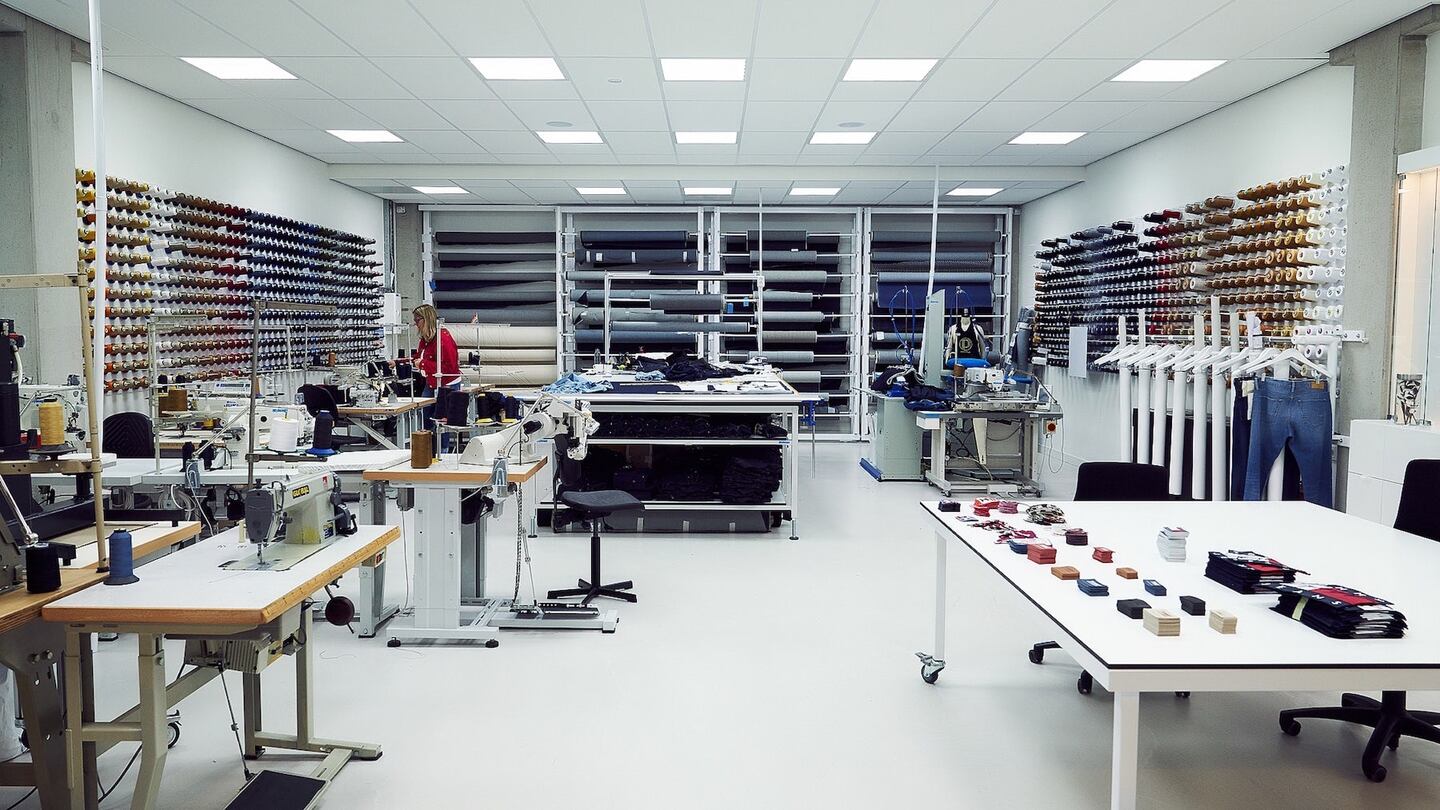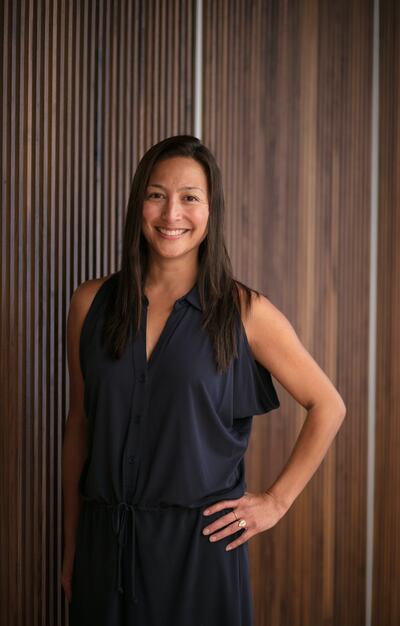
The Business of Fashion
Agenda-setting intelligence, analysis and advice for the global fashion community.

Agenda-setting intelligence, analysis and advice for the global fashion community.

NEW YORK, United States — As global stakeholders — investors, employees, communities and consumers alike — apply increasing pressure on brands and businesses to address fashion’s social and environmental damage, some influential businesses in the fashion industry are seeking to improve the industry’s operations and use its collective power to achieve positive impact.
Last year, PVH Corp. announced its Forward Fashion Corporate Responsibility (CR) strategy — to transform "how clothes are made and (re)used" — with its three focus areas: reducing negative impacts to zero; increasing positive impacts to 100 percent; and improving the 1 million+ lives across their supply chain.
These areas are broken down further into 15 trackable, timebound priorities, including eliminating carbon emissions and hazardous chemicals to innovating for circularity and sourcing ethically, as well as amplifying worker voices and advancing living wages, empowering women and fostering inclusion and diversity.
From their signature on the UN Fashion Charter for Climate Action to their involvement with the CEO Action for Diversity & Inclusion, the company and its brands, including Tommy Hilfiger and Calvin Klein, have committed to furthering their CR ambitions despite the disruption of the pandemic, while also providing transparency on how they are doing so. The company publishes workforce diversity, supply chain wage, and single-use plastic data, among other metrics.
By setting out corporate responsibility strategies in annual reports for the past 12 years and embedding them within the central business objectives of the company, the New York-based conglomerate, with $9.9 billion in revenue in 2019, is filtering down its social and environmental targets to its brand portfolio.
PVH's Calvin Klein, Tommy Hilfiger and Van Heusen all sit within the top 8 percentile of the 250 brands evaluated by Fashion Revolution — a non-profit with an annual index that has become an industry benchmark for sustainability — with a score of 54 percent, up 13 percentage points since 2019. Its portfolio also includes Izod, Arrow, Warner's, Olga, Geoffrey Beene and True & Co., and employs 40,000 associates operating in over 40 countries worldwide.

Marissa Pagnani McGowan, PVH's Senior Vice President of Corporate Responsibility | Source: Courtesy
Now, BoF sits down with PVH’s Senior Vice President of Corporate Responsibility, Marissa Pagnani McGowan, to hear more about the conception and implementation of their CR strategies, as well as the mission and the methodology behind PVH’s activities in light of the disruption shaping 2020.
What overarching strategies are the CR team focused on this year?
Last year, we announced Forward Fashion — our new strategy for corporate responsibility. Forward Fashion is an evolution of our longstanding work in this space, with an increased level of ambition and transparency to set ourselves up for the next 5 to 10 years. We have 15 time-bound targets to drive accountability, but it's the work behind the targets that matters most.
This was our first year publishing supply chain wage data, workforce diversity data and a waste baseline, which includes single-use plastics broken out. We have to do the hard work of measuring and understanding where we are today, to be able to innovate and improve.
Forward Fashion and the platforms built internally and externally to support the work allowed us to activate a number of partnerships and set up initiatives within a short time frame to navigate Covid-19 more responsibly, whether that was targeted strategic donations through our PVH Foundation, leveraging our supply chain to produce PPE, driving and participating in the International Labour Organization’s call to action to protect garment workers, or baselining our inventory and material liabilities to ensure nothing ended up in a landfill. We also signed two climate initiatives, UNGC and Science Based Target initiatives, asking governments to integrate more climate-friendly strategies into their business plans as they build back up.
How do you work across the business to integrate other teams and their CR-focused goals?
Our approach as a CR team is one of partnership and collaboration. You need to understand what another person or group is trying to accomplish and how by listening first, sharing your goals and ideas, and then co-creating solutions. Whenever we work with a team we haven’t before, it's like pushing on an open door — the willingness is there. But we have to understand their processes and challenges and help them understand what the issues are and then work together.
The PVH University is also one of the perks of being a PVH associate. The content is easily navigable, rich and accessible, covering a variety of subjects. We took an idea to the PVH U team, for example, to launch circularity training with the Ellen MacArthur Foundation both in-person and online. It connected the dots between resources and applied learning resources with practical work so that many more people in the organisation are informed about how we are literally weaving sustainability into products.
How is the CR team working to improve PVH’s inclusivity and diversity?
At PVH, we are proud of the work we've done to create an inclusive environment but also recognise that we have a long way to go. There are endless opportunities for correcting some of the ills of the past. Inclusion and diversity is certainly one where the open and frank conversations happening now about inequality, the fragility of systems, the interconnectedness of issues begin to offer a real commitment to setting goals, enabled by our collection and publication of data.
When you roll up the numbers, they look good. But when you break them down, there's a challenge there. By being transparent, we want to be accountable and give ourselves the baseline from which we can improve. There’s also the education and awareness component so that everyone realises they have a role to play.
Whenever we work with a team we haven't before, we have to understand their processes and challenges, then work together.
Our CEO Manny Chirico and our President Stefan Larsson are committed over the coming months to setting clear, timebound priorities and goals on how we're going to achieve the representation and type of diversity we want to see at all levels of the organisation and how we're going to support that, like through enabling pipelines of talent by building on our relationship with Howard University to work more closely with historically Black universities and colleges, looking at how we're looking at hiring and promoting as well as unconscious bias training.
We have partnerships with Howard University and Fordham University so we can actively work with these educational institutions to train the next generation of business leaders to be socially and environmentally responsible.
How has Covid-19 impacted and evolved the CR strategies?
Covid forced us to develop products, work with our suppliers and go to market in a digital environment — all of which have sustainability benefits. As a global society, we are having a collective experience, whether that’s adjusting to Zoom calls or having a family member fall unwell. As a result, collectively, many of us want to use our dollars to make a positive impact, to be more thoughtful about what and how we buy.
We've been watching consumer sentiment since Covid hit and there seems to be a real desire for sustainable fashion and an understanding, by both consumer and journalist communities, of how connected the issues that fall under the corporate responsibility umbrella are. How these different pieces – inclusion and diversity, environmental sustainability, human rights in the supply chain – connect and how driving fashion forward for good translates through all different areas of our business. Historically, CR teams sat on the fringes of business but to create transformational change, it needs to be inside business strategies.
How has PVH sought to protect its supply chain amidst the pandemic?
Luckily, we have a tight strategic supply chain and we have weekly calls with all our suppliers. We had about 1000 people on a call this month from our strategic supply chain. Our COO/CFO gave an update on the state of the business and updates on a supply chain perspective to keep the dialogue open. We're really trying to understand their challenges, help them understand our challenges and work together to get through this. We also rolled out global training that leveraged guidance from the World Health Organization and international best practices from the International Labour Organization on maintaining a safe and healthy factory environment.
Historically, CR teams sat on the fringes of business but to create transformational change, it needs to be inside business strategies.
Alongside partners across the industry, PVH helped drive — and participates in — a global call to action published by the ILO that brings together key stakeholders in response to the social and economic disruption that has affected workers throughout the supply chain, their families and their communities. Through this endorsement, we hope to work together to establish a more just and resilient garment industry better equipped to manage the impacts of Covid-19 and other future crises.
What do PVH’s external partnerships enable?
Achieving lasting change requires partnership and cooperation within our industry and across sectors. We work with other organisations across all of our priority areas to help measure and share our progress, improve how we design, make and operate our business, and innovate new solutions. We participate in ambitious global initiatives, like the G7 Fashion Pact and the United Nations Global Compact. We also align our work with the United Nation’s Sustainable Development Goals, a global roadmap for businesses, governments and civil society to achieve a more sustainable future.
What developments excite and inspire you moving forward?
I am excited to be part of what building back better means as a company and as an industry. Circularity is a huge opportunity right now and it's about durability, material choices and designing to be designed again. I'm also excited about the conversation around stakeholder capitalism. It's a buzz term right now, but are we going to start getting questions from investors about our longer-term strategy on sustainability and how that relates to the long-term health of our brands and business?
I love to be challenged, to continue to learn and to feel a little uncomfortable every day. But more so than anything, it's the people I work with that inspire me the. Doing something collectively, and collaborating with people that bring their own unique backgrounds, perspectives and inputs, can sometimes be hard. But when we get to a result that we could never have achieved alone, whether that's as a team, company or industry, that is always the most rewarding thing.
This is a sponsored feature paid for by PVH as part of a BoF Careers partnership.
The industry needs to ditch its reliance on fossil-fuel-based materials like polyester in order to meet climate targets, according to a new report from Textile Exchange.
Cotton linked to environmental and human rights abuses in Brazil is leaking into the supply chains of major fashion brands, a new investigation has found, prompting Zara-owner Inditex to send a scathing rebuke to the industry’s biggest sustainable cotton certifier.
Over the last few years, the run-up to Earth Day has become a marketing frenzy. But a crackdown on greenwashing may be changing the way brands approach their communications strategies.
This week, Sephora announced plans to double down on ‘green’ and ‘clean’ product labels, leaning into an increasingly risky marketing tactic even as a greenwashing crackdown has prompted other brands to pull back.